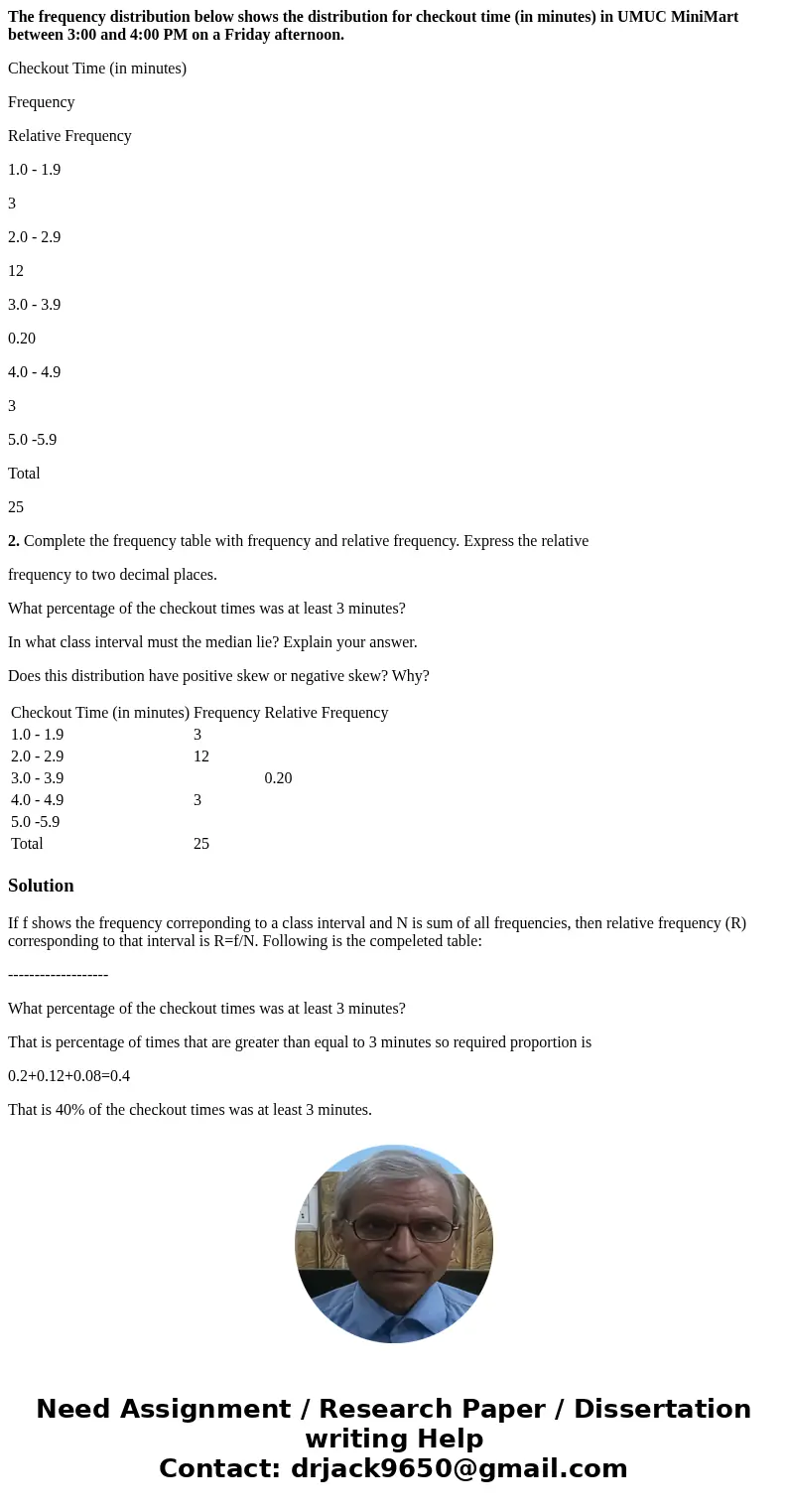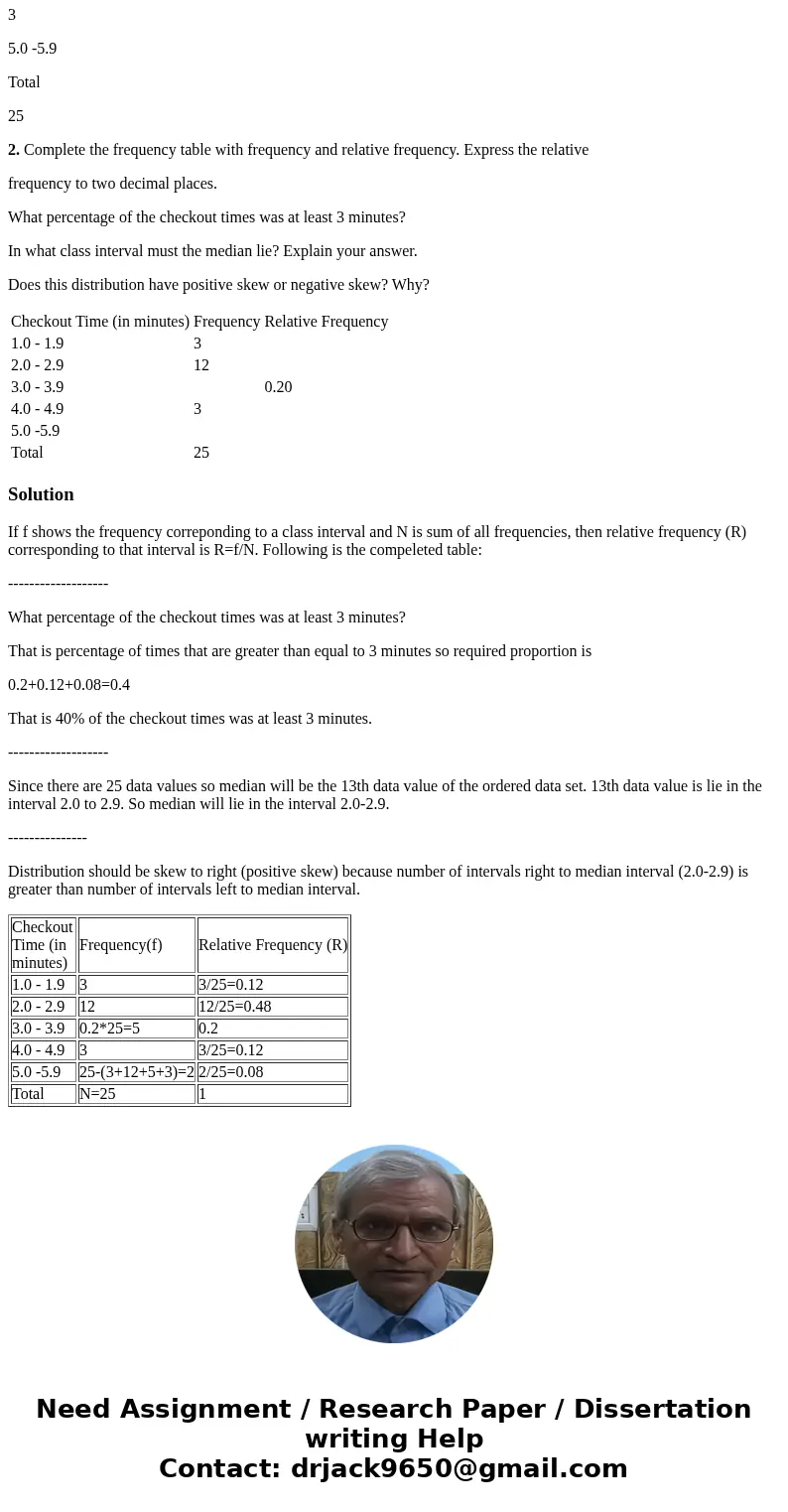The frequency distribution below shows the distribution for
The frequency distribution below shows the distribution for checkout time (in minutes) in UMUC MiniMart between 3:00 and 4:00 PM on a Friday afternoon.
Checkout Time (in minutes)
Frequency
Relative Frequency
1.0 - 1.9
3
2.0 - 2.9
12
3.0 - 3.9
0.20
4.0 - 4.9
3
5.0 -5.9
Total
25
2. Complete the frequency table with frequency and relative frequency. Express the relative
frequency to two decimal places.
What percentage of the checkout times was at least 3 minutes?
In what class interval must the median lie? Explain your answer.
Does this distribution have positive skew or negative skew? Why?
| Checkout Time (in minutes) | Frequency | Relative Frequency |
| 1.0 - 1.9 | 3 | |
| 2.0 - 2.9 | 12 | |
| 3.0 - 3.9 | 0.20 | |
| 4.0 - 4.9 | 3 | |
| 5.0 -5.9 | ||
| Total | 25 |
Solution
If f shows the frequency correponding to a class interval and N is sum of all frequencies, then relative frequency (R) corresponding to that interval is R=f/N. Following is the compeleted table:
-------------------
What percentage of the checkout times was at least 3 minutes?
That is percentage of times that are greater than equal to 3 minutes so required proportion is
0.2+0.12+0.08=0.4
That is 40% of the checkout times was at least 3 minutes.
-------------------
Since there are 25 data values so median will be the 13th data value of the ordered data set. 13th data value is lie in the interval 2.0 to 2.9. So median will lie in the interval 2.0-2.9.
---------------
Distribution should be skew to right (positive skew) because number of intervals right to median interval (2.0-2.9) is greater than number of intervals left to median interval.
| Checkout Time (in minutes) | Frequency(f) | Relative Frequency (R) |
| 1.0 - 1.9 | 3 | 3/25=0.12 |
| 2.0 - 2.9 | 12 | 12/25=0.48 |
| 3.0 - 3.9 | 0.2*25=5 | 0.2 |
| 4.0 - 4.9 | 3 | 3/25=0.12 |
| 5.0 -5.9 | 25-(3+12+5+3)=2 | 2/25=0.08 |
| Total | N=25 | 1 |


 Homework Sourse
Homework Sourse